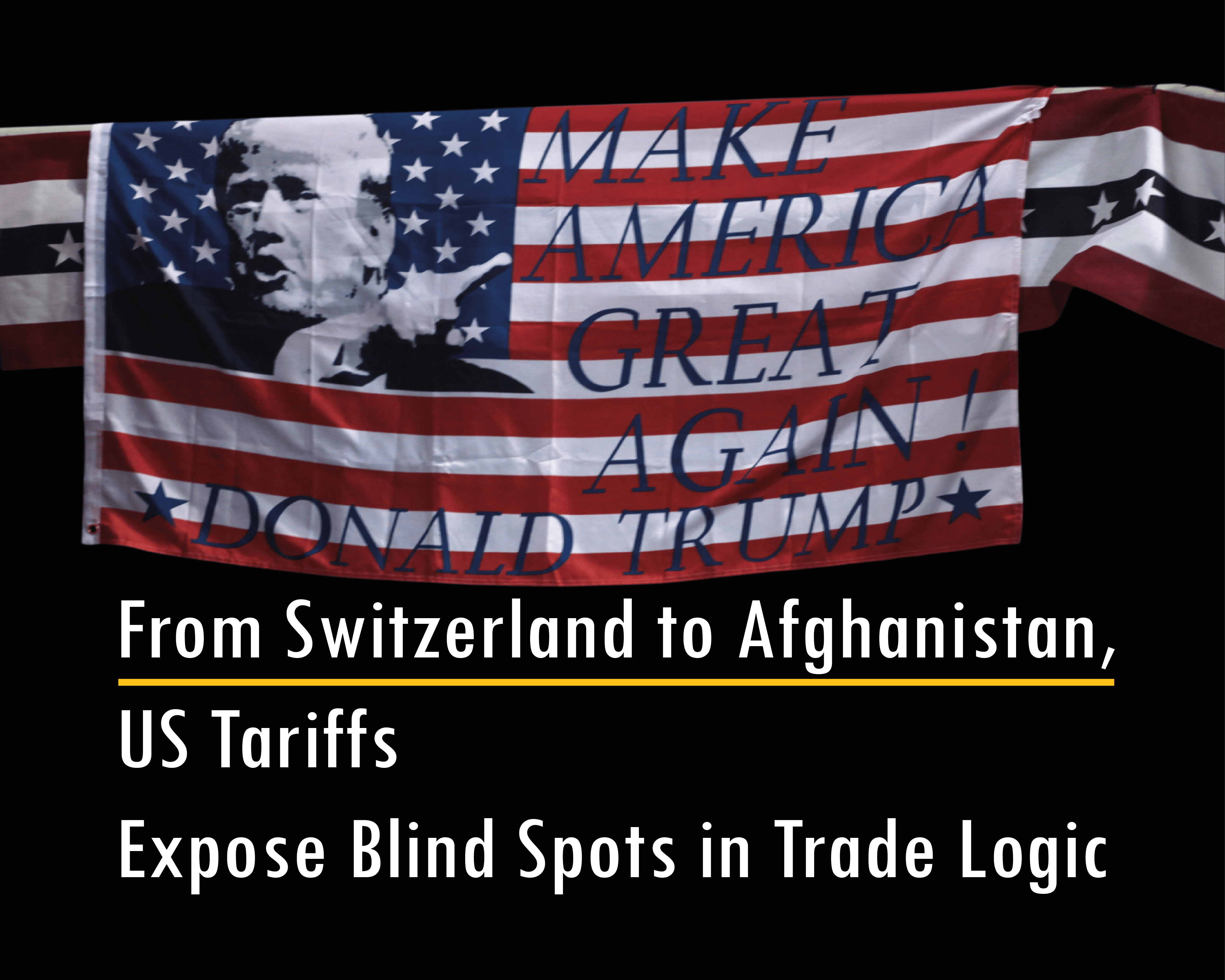The United States (US) is set to implement a new round of tariffs on August 7 as part of its revised trade strategy under the Trump administration. The tariffs, ranging from 10% to 41%, are calculated based on bilateral trade imbalances and apply to dozens of countries including two drawing particular attention: Afghanistan and Switzerland.
The Tariff Formula
When first announced in April 2025, these measures had already drawn criticism from international observers and economists, who described them as misaligned with modern trade dynamics and based on a simplistic formula:
Tariff (%) = (US Imports – US Exports) / US Imports × 100
The calculation considers only bilateral trade deficits in goods, excluding services—where the US typically runs a surplus—and is generally based on a 12-month average.
Afghanistan: Minimal Trade Flow, Maximal Tariff for an Unrecognized Government
The 15% tariff on imports from Afghanistan came as a double surprise. First, in a period of 12 months ending March 2024, Afghan exports to the US totaled just $5.7 million—a minimal trade volume—while US exports to Afghanistan reached $23.4 million. Applying the tariff formula yields a –17% result, reflecting a US trade surplus. Notably, the 15% tariff applied aligns almost exactly with the absolute value of that percentage, raising questions about whether the formula was used mechanically, without accounting for the direction of the trade balance.
Second, the political implications for applying tariffs to Afghanistan is to be questioned. The United States does not recognize the Taliban government, and key individuals remain subject to targeted sanctions. Nonetheless, general trade with Afghanistan is legally permitted under US regulations, provided that transactions do not involve designated persons or entities. The US Treasury has issued specific General Licenses authorizing commercial and humanitarian exchanges, including those related to food, medical supplies, and essential services.
Switzerland: A Strategic Ally Facing Full Tariff Force
Another country has drawn particular attention online, with Swiss exports facing a 39% tariff. Despite celebrating its National Day on August 1st, the Swiss government expressed concern over the escalation and indicated it will pursue a negotiated resolution. Switzerland serves as a key indicator of the Trump administration’s tariff approach: the country is neither protectionist, geopolitically hostile, nor a typical case of industrial dumping. Yet it faces steep tariffs—reflecting the rigid nature of the current policy, applied even to stable trade partners regardless of strategic alignment, sending a uneasy signal to other countries.
Uneven Impact for Other Countries
Switzerland is not alone, and remarkably high tariffs are also applied to several other countries, including Laos (40%), Myanmar (40%), and Syria (41%).
In contrast, some countries are notably absent from the tariff list, including Canada, Mexico, Cuba, and Russia. These exemptions reflect existing trade agreements, geopolitical considerations, or ongoing sanctions that preclude tariff adjustments.
Conclusion: Rigid Logic, Uncertain Intent
The inclusion of both Afghanistan and Switzerland in the same tariff framework highlights the blunt application of the US administration’s trade strategy—treating vastly different countries with similar rigidity. While the tariff policy is framed as reciprocal and data-driven, cases like Afghanistan raise doubts about its internal consistency. The 15% rate applied despite a clear US trade surplus has prompted speculation that the formula may have been applied using the absolute value of the trade imbalance, ignoring the direction of flow. While this remains unconfirmed, if true, it would point either to a lapse in policy execution or to a form of mechanical absolutism overriding basic economic reasoning. Either interpretation underscores the broader uncertainty surrounding the strategic coherence of the current tariff regime.

